
Nguyen Thi Phuong Thao / Tạp chí Khoa học và Công nghệ Đại học Duy Tân 6(49) (2021) 46-49
46
*Corresponding Author: Nguyen Thi Phuong Thao; Institute of Research and Development, Duy Tan University, Da
Nang, 550000, Vietnam; Department of Environment and Natural Science, Duy Tan University, Da Nang, 550000,
Vietnam
Email: thaonguyen@duytan.edu.vn
Compare transient stress induced in in-air and in-water laser ablation
using simulation method
So sánh ứng suất tức thời sinh ra trong quá trình phá hủy bằng tia laser trong không khí
và trong nước bằng phương pháp mô phỏng
Nguyen Thi Phuong Thaoa,b*
Nguyễn Thi Phương Thảoa,b*
aInstitute of Research and Development, Duy Tan University, Da Nang, 550000, Vietnam
aViện Nghiên cứu và Phát triển Công nghệ Cao, Trường Đại học Duy Tân, Đà Nẵng, Việt Nam
bDepartment of Environment and Natural Science, Duy Tan University, Da Nang, 550000, Vietnam
bKhoa Môi trường và Khoa học Tự nhiên, Trường Đại học Duy Tân, Đà Nẵng, Việt Nam
(Ngày nhận bài: 10/9/2021, ngày phản biện xong: 18/9/2021, ngày chấp nhận đăng: 04/12/2021)
Abstract
Photoelasticity images of pulsed laser ablation in water and in air were simulated by Finite Element Method. The Von
Mises stress distribution in the target is deduced from the simulated images and is compared between the two-ablation
regimes. The result confirms that pulse laser ablation in the water can induced a stress about 100 times higher than that
induced in ablation in the air.
Keywords: Photoelasticity images; Finite Element Method; pulse laser ablation; plasma confining effect; stress
enhancement.
Tóm tắt
Hình ảnh quang đàn hồi của quá trình phá hủy xung laser trong nước và trong không khí được mô phỏng bằng phương
pháp phần tử hữu hạn. Phân bố ứng suất Von Mises trong mẫu được rút ra từ hình ảnh mô phỏng và được so sánh giữa
hai trường hợp phá hủy. Kết quả xác nhận rằng phá hủy xung laser trong nước có thể tạo ra ứng suất lớn hơn khoảng
100 lần ứng suất sinh ra trong phá hủy xung laser trong môi trường không khí.
Từ khóa: Hình ảnh quang đàn hồi; phương pháp phần tử hữu hạn; quá trình phá hủy bằng tia laser; hiệu ứng nén
plasma; tăng cường ứng suất.
1. Introduction
When focusing an intense laser pulse on a
rigid surface, the material is gasified and
ionized to form a plasma. The plasma expands
at supersonic velocity and drives a shock wave
and stress waves into the surrounding media.
The breakdown of the target material in air
occurs when the leading edge of the laser pulse
strikes the target. This initial plasma absorbs
energy from the rest of the laser pulse and
6(49) (2021) 46-49

Nguyen Thi Phuong Thao / Tạp chí Khoa học và Công nghệ Đại học Duy Tân 6(49) (2021) 46-49
47
expands. Compared to ablation in air, the
plasma induced in underwater ablation is
strongly confined by the water [1]. This
confinement leads to a significant increase of
the shock pressure, thus enhances the stress
induced into the target [2, 3].
Due to the enhancement of shock pressure,
the laser-induced ablation in the water regime
has been extensively applied in laser cleaning,
laser drilling, laser peening, nanoparticle
synthesis etc. [4, 5]. Laser-matter interaction
under liquid is accompanied by a number of
notable phenomena, including ablation of the
matter, dielectric breakdown of the liquid,
plasma confinement, and bubble formation.
Besides the purely physical interest, a deeper
understanding of the behavior of laser-induced
shock process in an under-liquid regime is
required to evaluate and optimize its
mechanical effect [6, 7].
Photoelasticity imaging technique has been
proved as a unique tool to investigate the pulse
laser-induced ablation in liquid (PLAL) that not
only can give a whole field image of the
transient stress wave but also can provide a
semi-qualitative estimation of the strength of
induced stress [2]. In the previous work [8], we
introduced the simulation method to simulate
the photoelasticity image of PLAL. By using
simulation method, we can initially represent
the photoelasticity image and can deduce the
real value of laser-induced stress wave.
In this research, we simulate the laser-
induced ablation in air and in water to compare
the induced stress between the two ablation
regimes First, the simulation is carried out to
reconstruct the experimental images obtained
by photoelasticity imaging technique for in-air
and in-water ablation. Then, the Von Mises
Stress is elucidated from simulation for each
regime. The result confirms the stress
enhancement effect of water layer and showed
that the stress is increased by at least two orders
of magnitude if the ablation is carried in water.
2. Material and methods
2.1. Photoelasticity Imaging technique
The technique and imaging system have
been well described in our previous works [1,
2], thus only a brief is presented here. We
focused a 1064 nm laser pulse, with full width
at half maximum (FWHM) =13 ns, on to a
surface of epoxy-resin (target). The target was
either put in air or immersed in water. The
pulse energy was 20 mJ. Photoelasticity images
was obtained by using a pump-and-probe
imaging system together with a polariscope.
The images were captured at 2000 ns after
irradiation.
2.2. Simulation
We used GID to create a three-dimensional
model with the same size as the target used in
the experiments ( ). The
model was mesh-partitioned by
ADVENTURE_TriPatch. On the surface of the
model, a cavity ( ) was created to
represent the irradiated area. The laser-induced
pressure was simulated by giving initial
displacement to this cavity. Stress calculating
was carried out using smoothing technique-
based beta finite element method (β FEM). The
retardation of light due to photoelasticity
phenomenon was calculated based on the
values of stresses obtained. After that, the
photoelasticity image was reconstructed.
Details of the simulation method can be found
in our previous works [9, 8].

Nguyen Thi Phuong Thao / Tạp chí Khoa học và Công nghệ Đại học Duy Tân 6(49) (2021) 46-49
48
3. Results and discussion
Figure 1. A comparison between simulation and experiment photoelasticity images at pulse energy of 20 mJ,
for in-air and in-water ablation.
Figure 1(a) presents photoelasticity images
in air and under liquid, respectively, observed
at the same laser ablation conditions. The delay
time was 2000 ns from irradiation. The image
of in-air ablation does not have any fringes,
whereas that of under-liquid ablation shows
fringes with complicated patterns. Since the
larger number of fringes indicates higher stress
amplitude, these images qualitatively show that
a stronger stress is generated in liquid, which is
congruent with previous researches [10, 11].
To quantitatively investigate the increase of
induced stress, we carried out the simulation for
in air and in water. The results are shown in
Figure 1(b). The simulation well represents the
ablation in water and can reconstruct the
ablation in air to a certain extend.
From the simulation result, we analyzed the
Von Mises stress distribution inside the target
at 2000 ns after irradiation. Figure 2 presents a
comparison between the stress distribution in
in-water and in-air ablation. In both cases, the
induced stress is highest near the irradiated area
and decrease as the distance increases. For in-
air ablation, the maximum stress near the
irradiated area is less than 10 MPa and
decreases to approximate zero about 2.5 cm
away. For in-water ablation, the maximum
stress can reach 800 MPa near the irradiated
area and still reach approximate 50 MPa at
2.5cm away the irradiated point. This result
suggests that the ablation in water can increase
the induced stress by about two orders of
magnitude in comparison to ablation in air.
Figure 2. A comparison of stress distribution between in-air ablation and in-water ablation.

Nguyen Thi Phuong Thao / Tạp chí Khoa học và Công nghệ Đại học Duy Tân 6(49) (2021) 46-49
49
4. Conclusion
The simulation of photoelasticity images
was carried out for in-air and in-water ablation,
using finite element method. The simulation
results can represent the photoelasticity images
to a certain extent. The simulation result shows
that for in-air ablation, a 20 mJ laser pulse
induced a transient stress that is smaller than 10
MPa near the focal region. When the water was
used as confining medium, the transient stress
could be enhanced by two orders of magnitude.
Acknowledgment
The experiment results presented in this paper
were based on the experiments performed at
Department of Mechanical Engineering,
Nagaoka University of Technology, Japan. I
would like to express the great appreciation to
Prof. Yoshiro Ito and Dr. Rie Tanabe-Yamagishi
Rie for their valuable support and advice.
The photoelastic images were reconstructed
from the stress distribution by using a program
provided by Dr. Kenji Oguni and Dr. M.L.L
Wijerathne from the University of Tokyo,
Japan.
References
[1] T. T. P. Nguyen, R. Tanabe and Y. Ito, "Comparative
study of the expansion dynamics of laser-driven
plasma and shock wave in in-air and underwater
ablation regimes," Optics and Laser in Technology,
vol. 100, pp. 21-26, 2018.
[2] T. T. P. Nguyen, R. Tanabe and Y. Ito, "Laser-
induced shock process in under-liquid regime studied
by time-resolved photoelasticity imaging technique,"
Applied physics letter, vol. 102, no. 12, p. 124103,
2013.
[3] T. E. Itina, "On Nanoparticle Formation by Laser
Ablation in Liquids," J. Phys. Chem. C, vol. 115, p.
5044, 2011.
[4] K. Sasaki and N. Takada, "Liquid-phase laser
ablation," Pure Appl. Chem., vol. 82, pp. 1317-1327,
2010.
[5] H. Hongkun, L. Jiancheng, L. Jian and L. Zhenhua,
"Pulsed laser ablation of bulk target and particle
products in liquid for nanomaterial fabrication," AIP
Advances, vol. 9, p. 015307.
[6] K. K. Kim, M. Roy, H. Kwon, J. K. Song and S. M.
Park, "Laser ablation dynamics in liquid phase: The
effects of magnetic field and electrolyte," Journal of
Applied Physics, vol. 117, p. 074302, 2015.
[7] S. v. d. Linden, R. Hagmeijer and G.-w. Römer,
"Picosecond Pulsed Laser Ablation of Liquid
Covered Stainless Steel: Effect of Liquid Layer
Thickness on Ablation Efficiency," Journal of Laser
Micro/Nanoengineering, vol. 14, 2019.
[8] N. T. P. Thao, "Simulating the photoelastic images of
pulsed laser ablation in liquid by finite element
method," DTU Journal of Science and Technology,
vol. 2(39), pp. 63-68, 2020.
[9] T. P. T. Nguyen, "Simulation of pulsed laser ablation
in transparent materials by finite element method,"
DTU Journal of Science and Technology, vol. 2(39),
pp. 58-62, 2020.
[10] Y. Zhang, "Study of the mechanism of overlays
acting on laser shock waves," Journal of Applied
Physics, vol. 100, no. 103517, 2006.
[11] L. Berthe, R. Fabbro, P. Peyre, L. Tollier and E.
Bartnicki, "Shock waves from a water-confined laser-
generated plasma," Journal of Applied Physics, vol.
82, no. 2826, 1997.

![Câu hỏi ôn tập Hóa lý [chuẩn nhất]](https://cdn.tailieu.vn/images/document/thumbnail/2025/20250709/kimphuong1001/135x160/51111752043440.jpg)
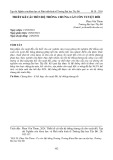
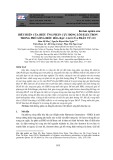



![Hệ Thống Bài Tập Phần I: [Thêm từ mô tả để tăng CTR]](https://cdn.tailieu.vn/images/document/thumbnail/2013/20131021/patrica1903/135x160/4851382347277.jpg)
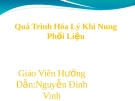
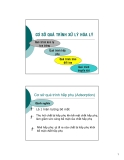
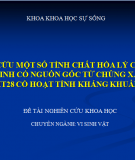
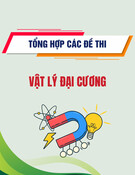

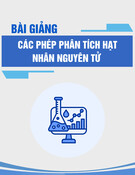
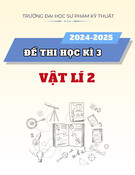
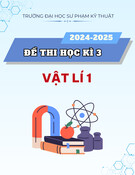
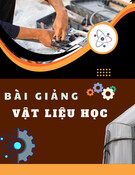
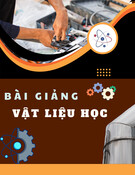
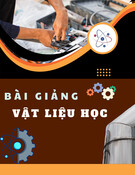
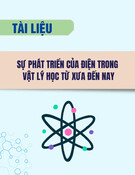
![Bộ câu hỏi lý thuyết Vật lý đại cương 2 [chuẩn nhất/mới nhất]](https://cdn.tailieu.vn/images/document/thumbnail/2025/20251003/kimphuong1001/135x160/74511759476041.jpg)
![Bài giảng Vật lý đại cương Chương 4 Học viện Kỹ thuật mật mã [Chuẩn SEO]](https://cdn.tailieu.vn/images/document/thumbnail/2025/20250925/kimphuong1001/135x160/46461758790667.jpg)




